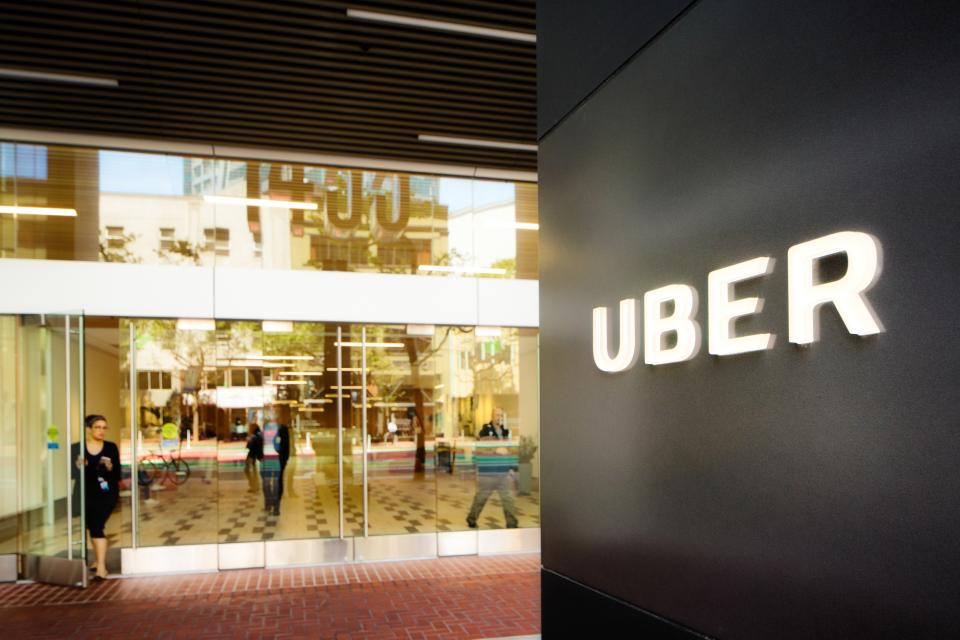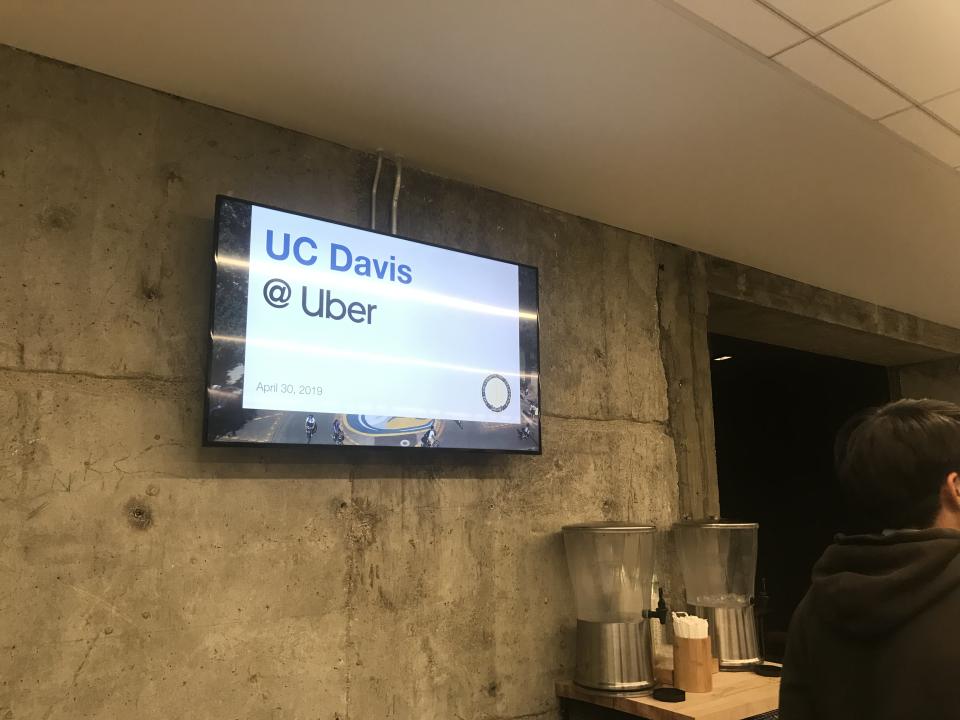Aggies at Uber Pop the Hood for MSBA Students
UC Davis alums lead tour about new technologies and opportunities

For a few years now, my dream has been to work at Uber. The ride-sharing service stole my heart in the late-2000s with their tech platform breakthrough and affordable ride hailing service that has made transportation easier for millions worldwide.

Thanks to UC Davis alumni at Uber, I was able to join a recent tour of the company.
It was a dream-come-true.
Along with fellow Master of Science in Business Analytics (MSBA) students, the “Uber tour” allowed us to network, explore career opportunities and hear from top executives who outlined the steps graduating students should take to apply for positions.
Our experience was phenomenal, with much to share. I’d like to highlight just a few of the interesting and informative takeaways from some of Uber’s top UC Davis alumni staffers:
Laura Libby, Sr. Data Scientist at Uber Labs
After earning her Ph.D. in psychology from UC Davis, Libby spent two years as a postdoctoral researcher at the UC Davis Dynamic Memory Lab in the Center for Neuroscience. She then took her talents to Uber, first as a research scientist and moving up to a senior data scientist within two years. She explained how to bridge the digital and physical worlds with behavioral science. One interesting implementation of behavioral science her team uses at Uber involves solving the problem of Uber Express Pool riders’ frequent canceling before a pickup. With Libby’s insights, the team is working hard to create new solutions for an evolving industry.
Alan Wells, Head of New Mobility Robotics at Uber
A 2006 UC Davis graduate with a B.A. in design, evolution and ecology, Wells introduced Uber’s New Mobility Robotics team to our student group. This division, which includes eBikes and eScooters, features a number of innovative ideas to help Uber break into other mobility markets. Wells described the advantages of dockless operational models. He hopes Uber’s innovative technologies will help the company continue to grow.
Yang Wang Visualization & Urban Computing at Uber
Focusing on human-computer interaction as a Ph.D. candidate at UC Davis, Wang used his computer science degree to gain valuable experience with some of the world’s largest corporations before joining Uber. He began as a research engineer with Fuji and Xerox in 2007, then joined IBM in 2014, and then Adobe in 2015. He’s now a member of Uber’s Visualization & Urban Computing group. He is also one of the guest speakers for our MSBA Data Visualization course. Wang works on various visual analytics projects at Uber, including self-driving vehicles, funnel mining, fraud and risk detection, and most recently, interpretable and auditable machine learning. In his presentation to students, Wang showed us the power of visualization, which supports dozens of units across the company including data science, autonomy engineering and product policy.
Jason Mikami, Head of Efficiency, SRE at Uber
A 1996 UC Davis MBA graduate, Mikami has spent the past 15 years as a senior executive in software development, technical operations and product and program management for several companies, including MobiTV, SugarSync, Bitcasa, Kumofox and the founder and owner of his family’s Mikami Vineyards. At Uber, he encouraged us to push ourselves to embrace challenges and gain experience in the process. He also pointed out that in today’s workplace, the ability to communicate and collaborate with others is key to individual and organizational success.
More Aggie Uber Insights
Several UC Davis alumni speakers also gave us insight as to how Uber utilizes state-of-the-art technologies to drive the organization’s fast growth.

Evan Smothers, a mathematics Ph.D. graduate of 2017, introduced us to the efficient global match system, which Uber uses to match riders with drivers quickly. This system lowers wait times for riders and increases business for drivers by taking traffic, overpasses, rivers, and other geographical factors into account for each pick-up.
Mason Ganz, a psychology major and 2017 alumnus, presented the successful business model of Uber Eats and explained how this platform has generated new business for restaurants everywhere.
Seeing the breadth of UC Davis graduates and their network has inspired me to continue pursuing my goal to earn my degree and one day work at Uber. At this event, I had the opportunity to network with professionals in a fast-paced tech company, many of whom were from UC Davis.
I also came away from the tour with a better understanding of Uber’s business model and different teams (just before the company made headlines with its initial public stock offering on May 10, 2019 with a valuation of $82.4 billion, among the highest for a company going public in the United States).
This event helped me discover the skills I need before hitting the job market this summer. And I have the MSBA program to thank for the extra motivation.